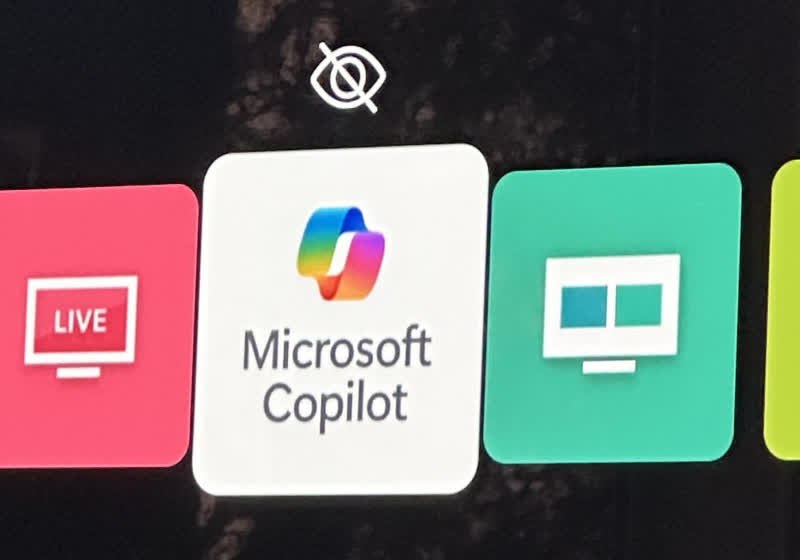Until recently, my smart home setup was in chaos. After years of testing, buying, and upgrading to the latest smart home gadgets in an attempt to make my life easier, it became a bloated mess that was actually making it more complicated.
My Alexa, Google Home, and Apple Home apps were awash with dead devices, duplicates, and automations that simply didn’t work. My Hue Bridge, trying desperately to tie it all together, was creaking at the seams. And the more advanced platforms I hadn't quite committed to, such as Homey and SmartThings, were fighting each other for bandwidth on an already congested network.
I was basically employed as full-time tech support in my own house, just to stop the kids moaning that their lights weren’t working … again. It was time for a reset—a chance to embark on a total rethink of what a comprehensive smart home in 2025 should look like. If that sounds daunting, it needn't be. Here's how I gave my smart home a much-needed reboot and brought harmony to my house once more.
Bye Bye, Alexa
A lot of people reading this probably walked the same path I did, of adding devices to Alexa early on because it was easy, then losing control as the smart home boom outpaced the platform that was meant to keep everything in sync.
This meant I ended up running a network of prosumer-grade smart home products on an operating system that, let’s face it, was designed to add dishwasher tablets to a shopping list and remind the kids to brush their teeth. It's not ever really been cut out to manage low-latency state changes across a hundred different devices.
Alexa has got better for moderate smart home users though, with Amazon adding things like Zigbee radios, Matter controller and Thread Border Router features to the mix in recent years—all of which give it a bit more flexibility. But it is still more of a great digital assistant than dedicated smart home system, and anyone looking to build something serious should look elsewhere.
I had already started porting some stuff over to HomeKit a while ago and Apple’s ecosystem is actually a vastly superior one to Amazon’s for the smart home—it's well worth considering if you’re all in on iOS and devices like Apple TV and HomePod, especially with the Thread radio now built into most modern iPhones too.
But even that wasn’t quite up to the task of building a DIY smart home to rival professional installations from the likes of Control4 and Crestron; installations that people spend an absolute fortune on.
What I needed was a proper way to manage everything, while at the same time keeping it easy for my family to control our devices using the voice commands and smart buttons that have become normal for them in the past few years. And while I was keen to move on from Alexa as a platform, it is still the assistant my family uses to control all of our smart home.
That's because we’ve got an Amazon Echo Show smart display in most rooms, which not only work as intercoms so we don’t need to shout up and down the stairs, but also manage a bunch of routines that anyone can trigger with simple voice commands. For the sake of ease, I didn’t want to change that.
But using Alexa for this required constant care and attention. Not only does it not tell you when a device is offline until you try to use it—which is incredibly frustrating—but in Amazon’s quest to make our smart homes easier, it has actually made things harder for anything more than the simplest setups. And the biggest issue for me was duplicate devices.
This is because when you're setting up new devices in your smart home system, Alexa not only uses its cloud-based Skills feature to pair with them, but it also adds certain brand’s devices directly when they connect to Echo smart speakers—without you doing anything. This was especially problematic for me with Philips Hue bulbs, when I ended up with four or five variations of the same bulb showing up in the Alexa app.
Not only did this make managing routines a nightmare, it also made voice control unusable. Every time I heard, “I found multiple devices with that name. Try renaming them, or putting them in a group,” a small part of me died.
Trying to keep on top of this chaos was only made all the more difficult when Amazon killed the Alexa web portal in 2022, which was the only place it was possible to mass delete devices. It also rejigged the Alexa app so that all the devices connected—even ones that had been manually disabled—were listed in the same place.
Deleting devices one by one is a huge time suck, and often requires a factory reset of an Echo speaker to clear long-dead devices from its cache. (Pro tip: turn off the Device Discovery option in an Echo speaker’s settings before attempting a big Alexa tidy-up.)
Local Knowledge
What I really needed was to ditch the cloud and make everything run locally. That’s always been the goal for smart home “enthusiasts,” but until recently it was easier said than done for anyone unfamiliar with what a YAML file is.
After a shaky start, the emergence of Matter as a serious force for smart home interoperability has made things a lot simpler, but the big driver for me was the fact that Home Assistant is now vastly more user-friendly than it ever has been. It’s no longer the Raspberry Pi hacking project of yesteryear; the open-source smart home gold standard is finally plug and play.
That’s not to say it’s been dumbed down (a criticism that Samsung has faced with its SmartThings platform); it’s still incredibly powerful (and incredibly confusing) if you go beyond the surface level.
But for anyone with even the slightest bit of tech savviness, it’s now straightforward to have Home Assistant running your smart home, especially with a device like the Home Assistant Green, which is kind of an official Home Assistant hub, and the easiest option for getting started with the platform.
It really is as simple as plug and play, with the Home Assistant OS already loaded and ready to go the moment it’s plugged into your router. Once I fired up the app it found a lot of my connected devices automatically and I was able to manually configure pretty much everything else through the vast catalogue of "Integrations".
You will need extra antennas to add things like Zigbee and Z-Wave to the mix (which simply plug in via USB) but Home Assistant doesn’t really care what the communication protocol is it’s using; it lets you mix and match to your heart’s content. And for the few things there wasn’t official support for, I was able to plug the gap with Matter.
The combination of Home Assistant and Matter means that I have got the bulk of my devices working locally now, which is great for security and stability of course, but also means things like motion sensors triggering lights happen much quicker.
In Home Assistant you don’t just see devices as a whole either—instead they are split down into their features so you can just use certain aspects of them. Home Assistant calls these “entities” and it means that you can do things like use the humidity reading from your thermostats or radiator TRVs kick-start your AC, or have a smart speaker remind you to open a window if the air quality drops.
Yes, technically, Alexa can do this too, but it’s unreliable and heavily cloud-based. With Home Assistant, I have found it just works because it was built that way from the start.
You can also use these data points to track patterns over time—think energy usage, average temperatures in bedrooms, the amount of times a fridge door is opened every day; there’s an endless amount of info that you are able to dive into. And since everything is tracked locally, there are no worries of Big Tech spying on you and your habits.
Home Assistant now powers 90 percent of my automations, a number that could hit 100 percent if I sign up to its $6.50/month cloud subscription. That would let me import Home Assistant automations directly into Alexa (as Scenes) and trigger them by voice.
The Invisible Upgrade
Getting Home Assistant up and running has also allowed me to start sorting a load of other smart home issues that have been on my to-do list for ages. I had a lot of orphan devices that weren't really connected to anything, and a bunch of discontinued stuff that really needed replacing.
The most high-profile casualties were my Google and Nest devices. I went in pretty hard on Google Home early on, and we could easily have gone down that route as a family instead of Alexa.
But while Google Home has stagnated (with some light on the horizon via Gemini for Home), I still had a bunch of Nest Protect smoke alarms and Nest Cams that needed clearing out. The Protects are now discontinued, and the Cams are pretty poor now, compared to the competition.
The jury is still out on the smoke alarms (I’m currently testing models from Aqara, Shelly and X-Sense, plus First Alert’s new smart detector), but for cameras, I’ve been moving everything to Reolink. Its cameras are packed with features at competitive prices, don’t require subscriptions for full functionality, and offer local storage to keep things out of the cloud.
We are now a few months into our new setup and to be honest, my family hasn't noticed much difference. And of course, they weren't supposed to. They are still using Alexa as their voice assistant, as they always have, to turn lights on, adjust the heat, disarm the alarm, or open the blinds.
But for me, as the unofficial house IT manager, removing Alexa as the platform that everything runs on, and streamlining the process has been the long overdue smart home upgrade we needed. The combination of a user-friendly voice assistant out front and a powerful smart home operating system in the background is a huge step up in keeping things running smoothly day in day out. If you’ve been putting it off, don’t. It’s easier than you think, and it’ll save you a ton of hassle in the long run.

 4 weeks ago
27
4 weeks ago
27







 English (US) ·
English (US) ·